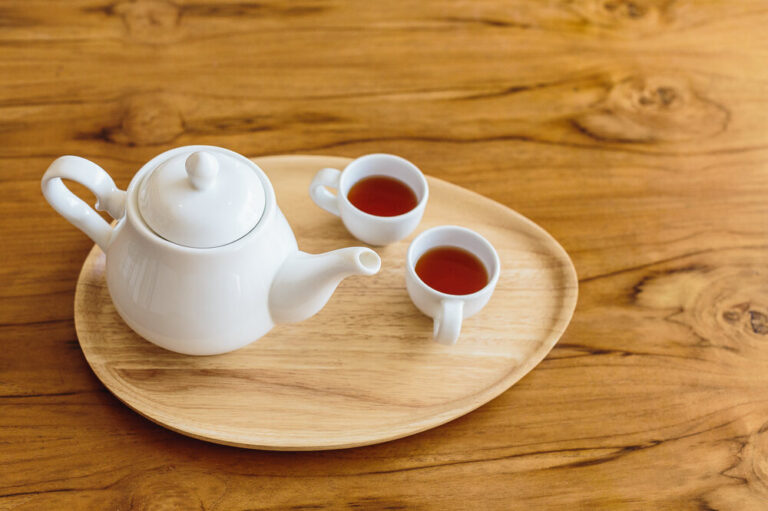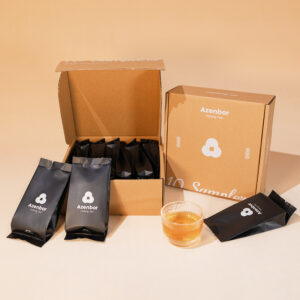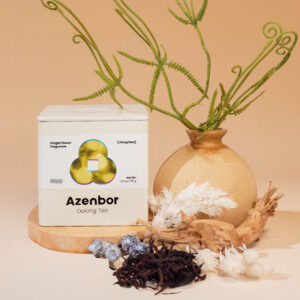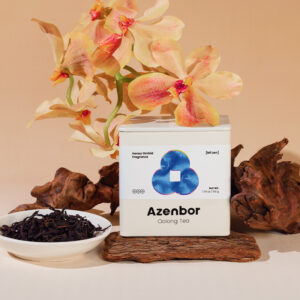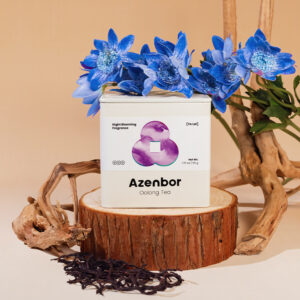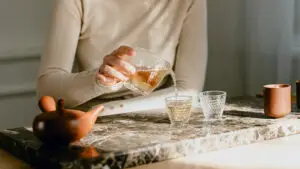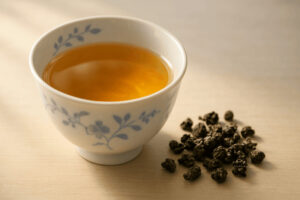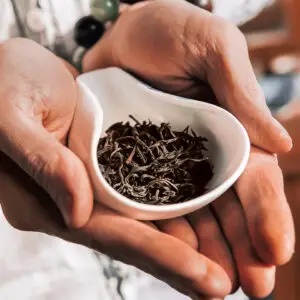The Rich History of Phoenix Oolong Tea
Phoenix Oolong tea has been cultivated in the misty mountains of Guangdong for over 600 years. The name “Dancong” means “single bush,” reflecting the fact that the tea is harvested from individual tea trees, each with its own unique flavor profile. In this guide, we’ll show you how to brew Phoenix Oolong tea with Azenbor to perfection, ensuring that every cup captures its rich, complex flavor profile.
Historically, Phoenix Oolong was so highly prized that it was once used as a tribute tea for the imperial court during the Qing Dynasty. This practice underlines the cultural and historical significance of the tea, and today it remains a symbol of high-quality craftsmanship in Chinese tea culture.
The tea’s roots are deeply intertwined with the local culture of Guangdong, particularly the Chaozhou and Shantou areas, where the tradition of Gongfu Cha (功夫茶) — the Chinese tea ceremony — is most prominent. It is here that the art of steeping tea has been perfected, and Phoenix Oolong plays a key role in the ceremony.
Understanding Phoenix Oolong Tea Basics
Phoenix dancong tea comes from China’s Guangdong province. It’s a special type of oolong tea. The name “dancong” means “single bush,” showing how it’s made from one tea tree. Get to know more about Phoenix Oolong Tea.
For example, the Huangzhi Xiang Classic is a famous Phoenix dancong. It has a complex flavor:
- the bright, zesty aroma of kumquat, reminiscent of a sun-drenched citrus grove.Creamy overtones
- Creamy overtones
- Hints of freshly baked gingerbread
- Subtle notes of nutmeg and peach
These layers of flavor are what make Phoenix Oolong so special. The variety of flavors is largely due to the environment in which the tea is grown, including the altitude, climate, and soil of the Phoenix Mountains in Guangdong.
How to Brew Phoenix Oolong Tea
Phoenix dancong tea comes from China’s Guangdong province. It’s a special type of oolong tea. The name
Steeping Phoenix dancong oolong tea is an art that brings out its unique flavors. Today we will introduce you two common methods to steep Phoenix Oolong Dancong.
The Prepation Before Brewing Phoenix Oolong Tea
- For the Gongfu method, think of your equipment as an artist’s tools. Each piece plays a crucial role:
1) The Gaiwan/Zisha Teapot: Your most important tool. We prefer a 120-150ml size – it’s perfect for solo sessions or sharing with a friend. The white porcelain helps you appreciate the tea’s color evolution through multiple steeps.
Supporting Cast:
- A fairness pitcher (Gong Dao Bei) for even distribution
- Small cups that fit comfortably in your hands
- A tea tray to catch spills (trust me, they happen!)
- A kettle with temperature control
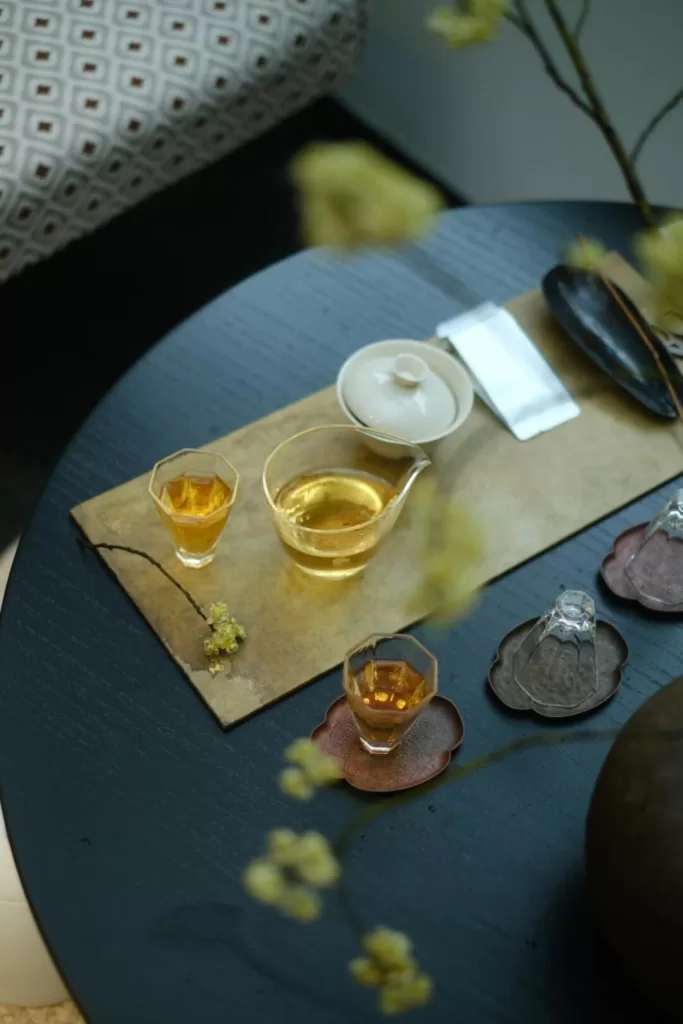
- For Western brewing, simplicity is key:
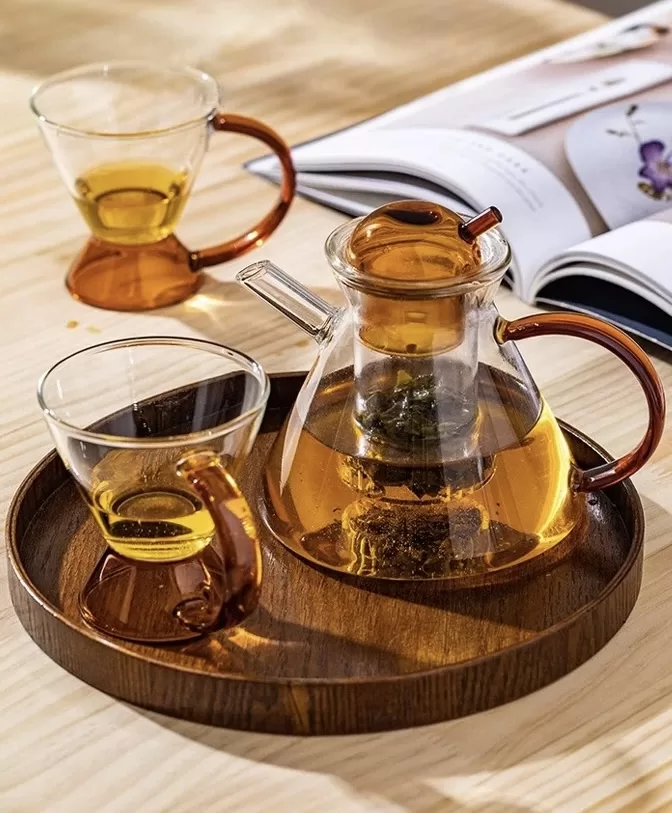
- Your favorite mug or tea cups
- A good teapot (300-500ml) with a built-in strainer
- A reliable kettle
To fully experience the deep aroma of Azenbor Phoenix Oolong tea, we strongly recommend using the traditional Gongfu method, which involves multiple short steeps with a high leaf-to-water ratio. For a quick and delicious cup of Azenbor Phoenix Oolong tea, the Western method, using fewer leaves and longer steeping times, is perfect.
There’s no single ‘right’ way to enjoy our tea. If you’re interested in comparing these two brewing styles, we encourage you to try our tea samplers. This way, you can discover which method brings out the flavors and aromas you enjoy most in our Azenbor Phoenix Oolong tea.
The Gongfu Method to Brew Phoenix Oolong Tea: A Journey of Flavor
Step 1: Setting the Stage
I always start by heating water to 95°C (203°F) – 100°C (12°F). While waiting for the water to heat, we arrange our tea space. There’s something meditative about this preparation – it’s a moment to transition from the day’s chaos to the peaceful ritual of tea making. We’ve learned that this mindful preparation significantly impacts the final cup.
Step 2: The Warming Dance
Pour hot water into your gaiwan and cups. Watch as steam rises, carrying the promise of tea to come. This step isn’t just practical – it’s your first interaction with the ceremony. One of our early mistakes was skipping this step, only to find our precious tea cooling too quickly in cold vessels.
Step 3: Meeting Your Tea
For a 120ml gaiwan, we use 5-7 grams of leaves. The amount might seem generous to newcomers, but trust me – Phoenix Oolong shines with this ratio. Place the leaves in your warmed gaiwan and perform what we call the “awakening rinse”:
- Pour hot water in a gentle spiral
- Watch the leaves begin their first dance
- Immediately discard this water
Pause here to appreciate the awakened aroma. We often find myself closing our eyes at this moment, letting the fragrance tell me what’s to come. Each variety of Phoenix Oolong presents its own unique preview – sometimes floral, sometimes fruity, always intriguing.
Step 4: The First True Steep
Now comes what we consider the most exciting part. The first proper infusion sets the tone for your entire session:
- Pour your 95~100°C water in a steady spiral.
For beginners, we recommend starting with a leaf-to-water ratio of 1:20 (for example, 6g of tea leaves to 120ml of water) – this provides a balanced introduction to the tea’s character.
As you gain experience, you’ll develop an intuition for adjusting this ratio to match your taste preferences.
Some experienced tea drinkers prefer a more concentrated brew with a 1:15 ratio, while others enjoy a lighter infusion at 1:25. There’s no absolute right or wrong; it’s about finding your perfect balance through experimentation. - Wait 5 seconds. These moments feel very fast, but they’re crucial. We often use this time to appreciate the steam patterns and emerging aroma.
- Pour with intention: thumb and middle finger on the rim, index finger on the lid. This grip took me weeks to master, but it’s become second nature now.
The resulting liquor should be clear and inviting. Take time with this first cup – notice how the flavor evolves from the moment it touches your lips to the lingering afterglow. We often find the first steep reveals bright, high notes that remind me of spring mornings.
Step 5: The Journey Through Infusions
Each subsequent steeping reveals a new chapter in your tea’s story. We like to think of it as getting to know a friend – each conversation reveals something new:
- Second Infusion (5-10 seconds):
By now, the leaves have fully awakened. The flavor typically deepens, often surprising first-time drinkers with its intensity. We remember our first Phoenix Oolong session – the transformation from the first to second steep was like watching a flower bloom in fast motion. - Third Infusion (10-15 seconds):
This is often our favorite steep. The tea reaches what we call its “sweet spot” – a perfect balance of intensity and complexity. You might notice a pleasant mineral quality emerging, like a whisper of mountain springs. - Fourth through Sixth Infusions (10-15 seconds):
Each steep becomes a gentle exploration. We gradually increase the time, listening to what the tea tells me. Sometimes, we find the later steeps offer subtle surprises – a hint of spice here, a touch of honey there.
A high-quality Phoenix Oolong can easily yield 6-8 infusions or more when brewed Gongfu style. In fact, some exceptional teas continue to reveal new layers of complexity well beyond the eighth steeping. This remarkable endurance is one of the hallmarks of a truly fine Phoenix Oolong, showcasing both the tea’s quality and the skill of its craftsmen.
Western Brewing: Phoenix Oolong for Everyday Enjoyment
Not everyone has time for the full Gongfu ceremony, and that’s perfectly fine. The Western method offers its own rewards. During busy workdays, this is often our go-to approach.
Preparation:
Heat water to 90-95°C. We’ve found this slightly lower temperature helps prevent bitterness during the longer steep. Use 3 grams of tea per 200ml water – about a heaping teaspoon for a standard mug.
The Process:
- Warm your teapot (a step We never skip, even when in a hurry)
- Add your leaves
- Pour water in a circular motion
- Let it steep for 2-3 minutes
We often use this time to clear our mind or plan our days. The beauty of Western brewing lies in its adaptability to modern life while still preserving the tea’s essential character.
Finding Your Path: Choosing Between Methods for Brewing Phoenix Oolong Tea
| The Gongfu Experience | The Western Way | |
| Advantages | 1. Reveals the tea’s full complexity 2. Offers a meditative experience 3. Provides maximum control over the brewing process 4. Creates beautiful memories with friends | 1. Quick and convenient 2. Requires minimal equipment 3. Easy to learn 4. Perfect for multitasking |
| Challenges | 1. Requires dedicated time and attention 2. Needs specific equipment 3. Takes practice to master | 1. Misses some subtle flavor transitions 2. Fewer infusions possible 3. Less control over the brewing process |
The Gongfu Experience:
Perfect for weekends or evenings when you can fully immerse yourself in the experience. It’s like choosing between a quick phone call and a long conversation with a friend – sometimes you want that deeper connection.
The Western Way:
Ideal for daily drinking or busy schedules. Think of it as the tea’s adaptation to modern life.
Troubleshooting of Brewing Phoenix Oolong Tea: Learning from Experience
Trouble 1. When Your Tea Tastes Bitter:
I remember one friend who was ready to give up on Phoenix Oolong because of persistent bitterness. The solution was simple: we reduced her water temperature by just 5°C. Sometimes the smallest adjustments make the biggest difference. If you’re experiencing bitterness:
- Try slightly cooler water
- Reduce steeping time by 5-10 seconds
- Check your leaf-to-water ratio
Trouble 2. When Flavor Seems Weak:
A common issue, especially with Western brewing. One colleague couldn’t understand why his office-brewed tea lacked the intensity he remembered from our tea sessions. We discovered his office kettle wasn’t reaching proper temperature. Key fixes:
- Ensure water is hot enough
- Add slightly more leaf
- Extend steeping time gradually
- Check water quality (filtered water often works best)
Trouble 3. How to Properly Store Phoenix Oolong Tea?
Proper storage isn’t just about maintaining freshness – it’s about respecting the tea. We keep our Phoenix Oolong in a ceramic container with a tight-fitting lid, away from strong odors and direct light. The tea should maintain its twisted shape and clean aroma when stored properly.
A Personal Note on Tea Culture
After years of working with Phoenix Oolong, we’ve come to see it as more than just a beverage. Each session is an opportunity to slow down and connect – whether with friends, family, or simply with yourself. We’ve hosted countless tea sessions where conversations flowed as freely as the tea, creating memories that last far longer than the lingering aftertaste.
Final Thoughts
Whether you choose the meditative path of Gongfu brewing or the practical efficiency of Western style, remember that there’s no “wrong” way to enjoy Phoenix Oolong. The key is finding the method that fits your life while honoring the tea’s character. Start with these guidelines, but don’t be afraid to adjust them to your taste and circumstances.
Ready to experience the exquisite flavors of Azenbor’s Phoenix Oolong? Shop our collection now:
Recommended products
As our old tea teacher used to say, “The best cup of tea is the one that brings you joy.” Through practice and patience, you’ll develop your own relationship with this remarkable tea. Each session is an opportunity to learn something new, whether about the tea, the brewing process, or yourself.
Remember, the journey with tea never really ends – it simply evolves, one cup at a time. Enjoy the process, embrace the learning curve, and most importantly, savor each moment with your tea.
